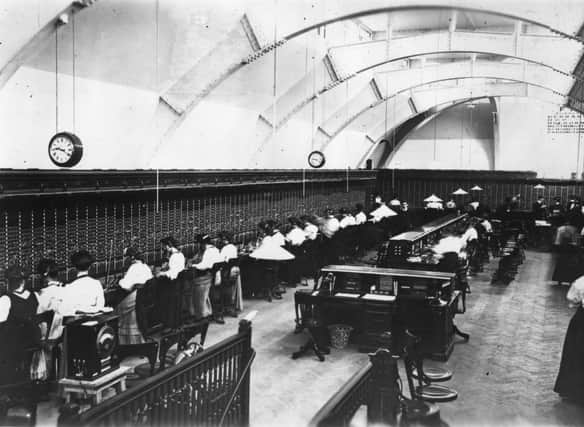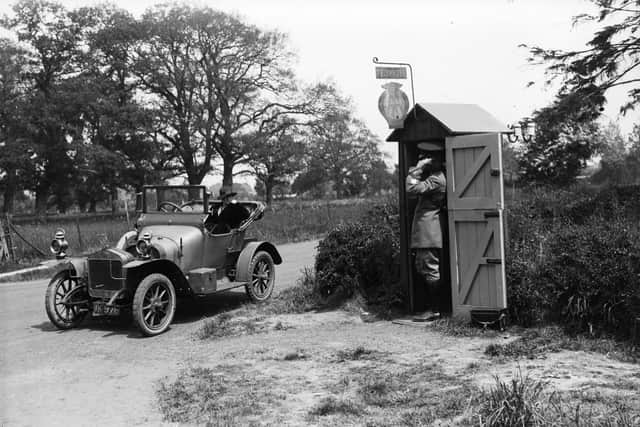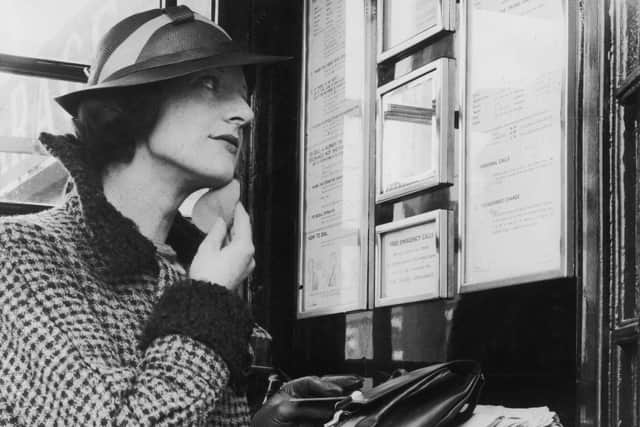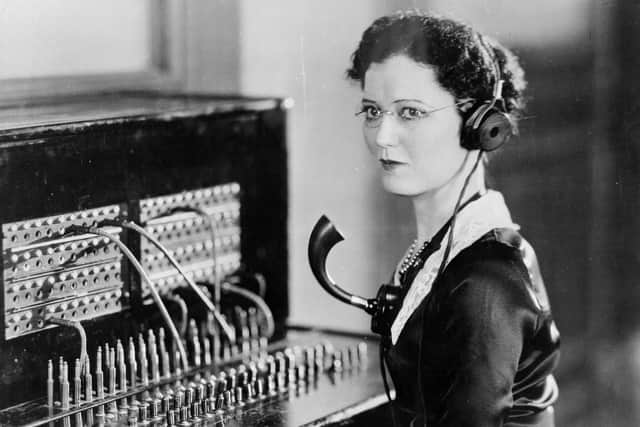Rare pictures of the way we used to telephone


But as these rare pictures from the archive remind us, they were merely the icing on the cake of a rich and intricate network that bound communities together.
It was primitive by today’s standards – even though many of the cables laid in the first half of the 20th century remain the backbone of our modern broadband networks – but it inspired a whole culture of communication.
Advertisement
Hide AdAdvertisement
Hide AdThe public kiosks – white in Hull, red everywhere else – were supplemented by networks of private phone boxes maintained by the police and the AA and RAC for the benefit of their members. Until as recently as the 1970s, every membership card for either organisation came with a key that would open any of them.


There were also banks of public phones at railway stations, usually encased in wooden cubicles, and as the bottom picture suggests, vacant handsets were often at a premium.
Connection until the 1960s was a matter of pressing button A to hear the other party or button B to get your fourpence back. A generation of children and adults alike seldom failed to pass one without trying their luck with button B, in case the last caller had left coins behind.
The network was controlled by the General Post Office, to whom telephony was just an extension of the Royal Mail. At the heart of the network were the exchanges, where in the days before direct dialling, or “subscriber trunk dialing”, as the GPO called it, banks of women answered calls with the greeting, “number, please” and connected callers by plugging a cord from a spaghetti-like jumble into the correct hole on a giant patch board.
Advertisement
Hide AdAdvertisement
Hide AdBorn of the Edwardian era, the system remained largely in place until the 1980s.


Editor’s note: first and foremost - and rarely have I written down these words with more sincerity - I hope this finds you well.
Almost certainly you are here because you value the quality and the integrity of the journalism produced by The Yorkshire Post’s journalists - almost all of which live alongside you in Yorkshire, spending the wages they earn with Yorkshire businesses - who last year took this title to the industry watchdog’s Most Trusted Newspaper in Britain accolade.
And that is why I must make an urgent request of you: as advertising revenue declines, your support becomes evermore crucial to the maintenance of the journalistic standards expected of The Yorkshire Post. If you can, safely, please buy a paper or take up a subscription. We want to continue to make you proud of Yorkshire’s National Newspaper but we are going to need your help.
Advertisement
Hide AdAdvertisement
Hide AdPostal subscription copies can be ordered by calling 0330 4030066 or by emailing [email protected]. Vouchers, to be exchanged at retail sales outlets - our newsagents need you, too - can be subscribed to by contacting subscriptions on 0330 1235950 or by visiting www.localsubsplus.co.uk where you should select The Yorkshire Post from the list of titles available.


If you want to help right now, download our tablet app from the App / Play Stores. Every contribution you make helps to provide this county with the best regional journalism in the country.
Sincerely. Thank you.
James Mitchinson, Editor
Comment Guidelines
National World encourages reader discussion on our stories. User feedback, insights and back-and-forth exchanges add a rich layer of context to reporting. Please review our Community Guidelines before commenting.